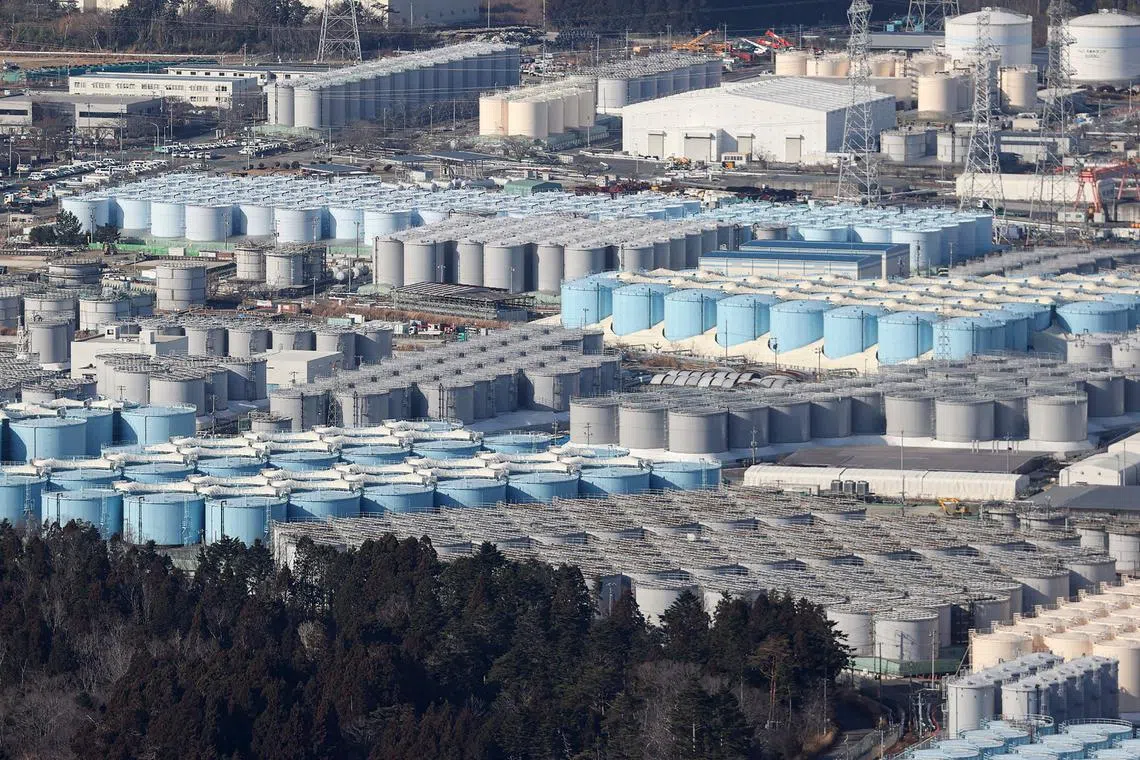For subscribers
The science behind Japan’s plan to empty nuclear wastewater into the Pacific
Treated water from the wrecked Fukushima plant will be discharged into the ocean from this week, a proposal that has prompted alarm from nations including China.
Sign up now: Get ST's newsletters delivered to your inbox

Releasing the vast volumes of water is necessary as storage tanks are forecast to hit capacity in early 2024.
PHOTO: AFP
Shoko Oda
Follow topic:
Twisted sections of a reactor unit remain exposed at the Fukushima Dai-ichi nuclear plant and a crushed metal tank lies near Japan’s coastline, reminders of one of the world’s worst atomic disasters, which happened in 2011,
Huge cranes are stationed across the site of Tokyo Electric Power Company’s (Tepco) wrecked facility, while some areas have been covered with giant dome-like structures as work continues to manage the removal of dangerous fuel debris.

